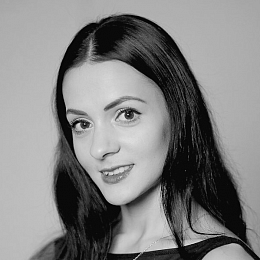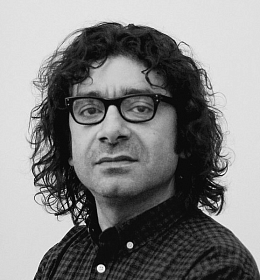stage
Artists
Credits
Original libretto by Charles-Louis-Étienne Nuitter and Arthur Saint-Léon. The story after the original libretto is created by Gleb Filshtinsky, Viacheslav Okunev and Mikhail Messerer. The performance includes excerpts and patterns of choreography by Arthur Saint-Léon, Marius Petipa, Enrico Cecchetti, Alexandre Gorsky.
Rendition and production: Mikhail Messerer
Musical director and conductor: Pavel Sorokin
Scenery and costumes: Viacheslav Okunev
Multimedia, video concept: Gleb Filshtinsky
Lighting: Denis Solntsev
Video content: Show Consulting studio, Saint-Petersburg 
Chief video designer with Show Consulting studio: Sergei Nikolaev
Assistant ballet master-producer: Anna Razenko, Evgeniy Popov
Ballet tutors: Evgeniy Grashchenko, Vladimir Grigoriev, Nina Furaleva, Galina Sedova, Anastasia Lifentseva, Victoria Ryazhenova
2 hours 20 minutes
two intermissions
Leo Délibes’ “Coppélia” hasn’t lost any of its relevance through the last 150 years. Creators of the libretto ballet masters Charles-Louis-Étienne Nuitter and Arthur Saint-Léon used E. T. A. Hoffmann’s “Der Sandmann” novel as a basis for the plot; it tells of a young man, who fell in love with a mechanical doll, created by an ingenious master Coppélius.
Production team for this performance is represented by the same people, who provided the Novosibirsk audience with the magical “Cinderella” ballet: producing ballet master Mikhail Messerer, designers Viacheslav Okunev and Gleb Filshtinsky. This time the production team came up with an exquisite comedy about quarrel and reconciliation between two in love; the main character, mischievous Swanhilda, finds a witty way to teach her cheating bridegroom a lesson…
As it was with “Cinderella” ballet well loved by the Novosibirsk audience, the new “Coppélia” performance is featured with multimedia scenery along with traditional one; the ballet also includes using of video projection and expressive lighting. “Coppélia” contains Leo Délibes’ beautiful music, brilliant dance items, amusing love story, kind humor and funny playful moments, which will positively be loved by the youngest NOVAT audience.
Choreographer Mikhail Messerer said that in his new work he used classical “Coppélia” renditions with patterns of performances by Arthur Saint-Léon, Marius Petipa, Alexandre Gorsky: “Classical ballet literature contains only a few comedy ballets, and “Coppélia” is the most important. Nowadays the world is thirsty for classical ballets containing intricate pointe technique of the female part and masterful male dance, which is exactly the case of this cheerful, merry ballet. “Coppélia” is not only the perfect example of pure classical choreography, but also a family performance. This kind of ballet performances sounds relevant and up to date; they need to live on the stage for the audience’s delight”.
Prologue
It’s an amazing office filled with wonderful things and numerous clockwork mechanisms. The owner of the office, Dr. Coppelius, is a clockmaker and a puppeteer engineer who is extremely enthusiastic about his work. He makes dolls all his free time, and there are many cheerful and good-natured mechanical dolls in his office. Coppelius decides to create a whole small town, populate it with inhabitants, and play out a funny, mischievous love story in it. With a wave of Coppelius' hands, we are transferred from his office to the streets of the town located on the border with Galicia…
Act 1
The day before, all residents of the town were shocked by the incredible news – a charming girl was seen in the Coppelius’ house, and no one knew who she was and where she came from. The inhabitants considered her the daughter of Coppelius and named her Coppelia. The boys vied with each other to get to know her, although unsuccessfully, and the girls jealously watched them. However, one of the young men, Franz, was lucky: the girl not only responded to his bow, but even blew a kiss from the window, which caused Franz to have a quarrel with his fiancée Swanhilda. It's getting late. Young people try to get into the house of Coppelius, but the owner disperses them like guilty schoolchildren. In the confusion, he loses the key to the house. Swanhilda and her friends find the key, and the girls decide to sneak into the house to find out who this beautiful stranger is. Coppelius returns, finds the door of the house open and quietly enters the house, wanting to catch uninvited guests. Franz, being aggrieved to Swanilda, decides to climb to a stranger through the window, not knowing that Swanilda, her friends, and Coppelius himself are in the house.
Act 2
Coppelius watches as Franz enters his house in search of a closer acquaintance with Coppelia. With one movement of his hand, Coppelius transfers the events of the play from the town street back to his office.
Having made their way into the house of Coppelius, Swanhilda and her friends explore a wonderful room. There is no limit to their curiosity. There is a Chinese, a Spaniard, a knight, a stargazer, a clown and many, many other dolls. A big surprise for them is that the stranger they are interested in also turns out to be a doll. For joy, the girls start all the toys and dance. Returning Coppelius finds them at the scene of the crime. The friends manage to escape, but the master of clocks and dolls detains Swanhilda.
At this time, Franz appears in the window. Swanhilda complains to the kind-hearted master about the young man's betrayal, and Coppelius suggests that she play a little trick on Franz and teach him a lesson.
Making drunk the windy young man with wine, Coppelius disguises Swanilda in a doll's dress, and then introduces Franz to a beautiful "stranger". The young man is confused by the angular movements of the girl; she walks as "spelling" each step. When Coppelius informs him that it is a doll, Franz cannot recover from amazement – it is so well made.
Coppelius mysteriously says that he can revive the doll. Franz does not believe this: it is enough that he has already been trapped once and has fallen in love with a doll. But what is it? The doll really came to life. Franz is convinced of this by listening to her heartbeat. Interest in the girl flares up again in him, and he asks Coppelius for her hand. Now Franz's betrayal is obvious. Swanhilda tears off the doll's wig and makes Franz repent of his behavior. The young man begs her forgiveness. Franz's remorse is so sincere, and their mutual love is so obvious that the intervention of Coppelius, who decided to reconcile the lovers, leads everyone to a happy end.
Act 3
Coppelius is preparing a gift for the residents of the town – a new clock for the town hall on the central square. The clockmaker wished that dolls from his office become part of an amazing clockwork mechanism.
The gorgeous clock appears in front of admiring citizens celebrating the City Day. The square is filled with people. On this day, according to tradition, a wedding is also celebrated. Today, several young couples are getting married at once, and Swanhilda and Franz are among them.
The ceremony is over, the festive dances begin.
Coppelius calls Swanhilda and Franz to him and, looking slyly at the happy young man, the old master gives the newlyweds a little doll as a pledge of their faithful love.
Epilogue
The holiday is coming to an end. Coppelius realizes that it's time to end the game of the town that came to life. The inhabitants of the town are leaving, only Franz and Swanhilda remain on the square, and Coppelia is still sitting on the balcony. But maybe the clockmaker didn't take something into account, and the town will continue to live its life...



